Register for medical examination and treatment with citizen identification card: Many benefits
In order to reduce cumbersome paperwork for patients and improve services, the health sector is promoting the implementation of medical examination and treatment registration using chip-embedded citizen identification cards and via VNeID.
Convenient, fast
Implementing the direction of the Provincial People's Committee, the Department of Health has requested medical facilities to promote the implementation of health insurance examination and treatment using chip-embedded citizen identification cards (CCCD) and level 2 electronic identification accounts of people (through the use of VNeID software on smartphones). Accordingly, medical facilities have also implemented medical examination and treatment using CCCD and VNeID. When examining and treating patients using health insurance cards, people presenting documents have to wait quite a long time for medical staff to verify and enter information. Using CCCD or VNeID, all you need to do is show your CCCD card or mobile phone with installed software.
During a medical examination at Quy Nhon City Medical Center, Mr. Nguyen Hieu (74 years old, in Tran Hung Dao Ward, Quy Nhon City), shared: The last time I brought my papers to the medical examination as usual, the medical staff instructed me to show my CCCD card and told me that next time I only need to bring my CCCD. For an elderly person like me, it is very convenient to bring only my CCCD.
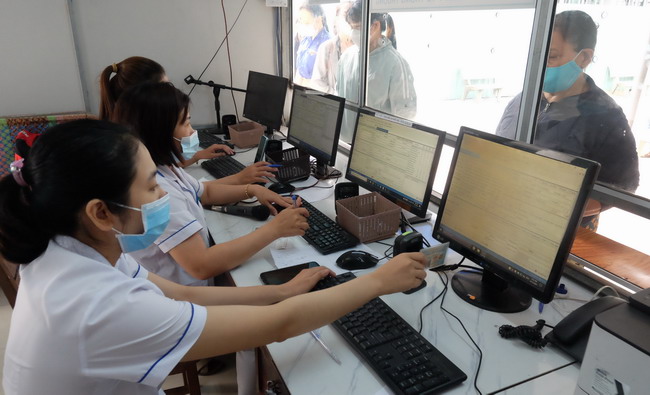 |
Medical staff of Quy Nhon City Health Center register people for health examination and treatment with health insurance using CCCD. Photo: D. THAO |
Regarding the implementation of medical examination and treatment using CCCD at Quy Nhon Medical Center, Mr. Tran Ky Hau, Director of the Center, said: Quy Nhon Medical Center is very well organized, but many people are still used to using health insurance cards and ID cards, so they often forget to bring their CCCDs. However, the Center also organizes the parallel implementation of health insurance, CCCD and VNeID, so it is also convenient. The Center is also implementing the purchase of CCCD chip card readers for 21 medical stations, so that the medical stations can also deploy these utilities to facilitate people when coming to see a doctor or receive medical treatment. The use of CCCD and smartphone applications to replace health insurance cards is inevitable, so we will continue to try.
Continue propaganda
To make the use of CCCD and VNeID a habit, Hoai Nhon Town Health Center has thoroughly instructed all medical stations and the Examination Department to register for medical examination and treatment for people using CCCD, so the rate of people using CCCD for medical examination and treatment is quite high. However, due to habit and some people still do not know about this utility, many people are still confused.
In this situation, Mr. Tran Huu Vinh, Director of Hoai Nhon Town Health Center, said: We are conducting propaganda through the radio and hanging banners so that people can hear, see and remember many times. We are also buying readers to scan the CCCD chip code.
Similarly, in Phu My district, the rate of people using ID cards for medical examination and treatment at medical facilities is only about 20 - 25%. Mr. Nguyen Thai Hoc, Director of Phu My District Health Center, shared: To form a habit, when people come to register for medical examination and treatment, medical staff will ask for their ID cards and give instructions and reminders for the next time. However, most young people bring their ID cards while the elderly still only use their health insurance cards. Currently, the Health Center is organizing the purchase of card readers compatible with ID cards and will equip all 19 communes and towns.
In mountainous districts, the use of CCCD in medical examination and treatment will take some more time. Mr. Duong Van Tiep, Director of An Lao District Health Center, shared: The characteristic of our district is that the ability to spread information is slower than in the plains, the level of education and reception is also lower, so it is difficult to deploy quickly, but we will actively propagate and guide people to grasp the information. At the Health Center, there is a loudspeaker system to warn of epidemics and medical information. Through this, we also propagate the use of CCCD. At the same time, medical staff will also remind people during medical examinations and treatments.
DO THAO
Source









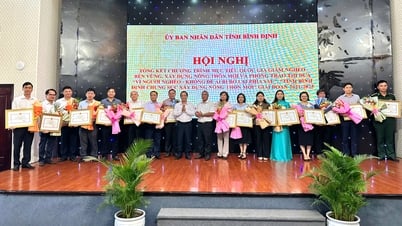

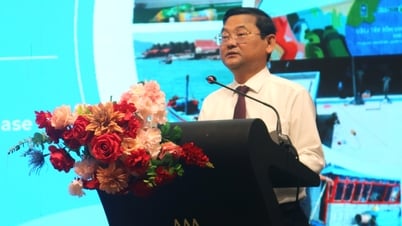

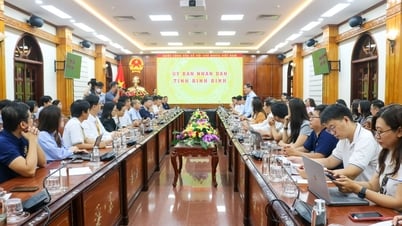





































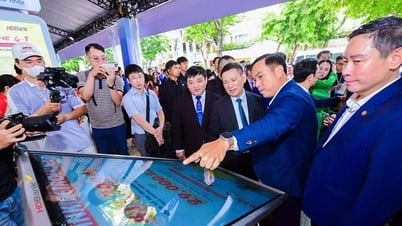




















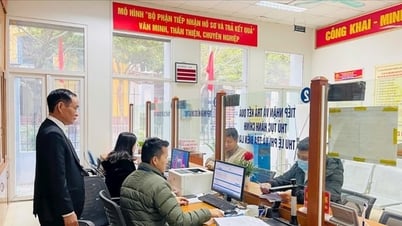






















Comment (0)